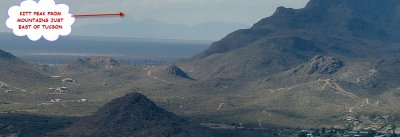
THE KITT PEAK OBSERVATORY IS ON THE TOP OF THIS MOUNTAIN OVER 50 MILES WEST OF TUCSON |

THIS SIGN GREETS ALL VISITORS TO KITT PEAK AS ONE TURNS OFF THE MAIN HIGHWAY |
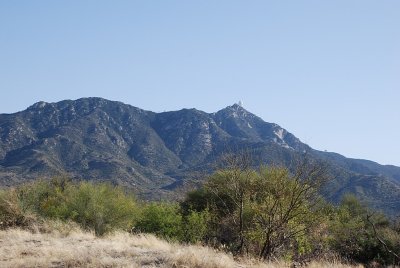
IT IS AN ELEVEN MILE CLIMB TO THE TOP OF THE MOUNTAIN |
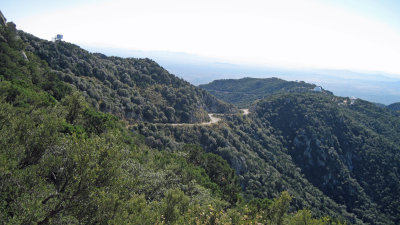
WE ARE GETTING CLOSER TO THE PEAK. THE SWITCH BACKS AND DROPOFFS WERE AMAZING. |
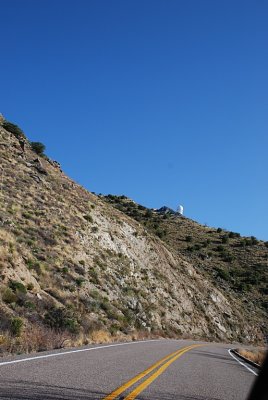
THIS IS NO PLACE TO LOSE YOUR GRIP ON THE WHEEL OF YOUR CAR |
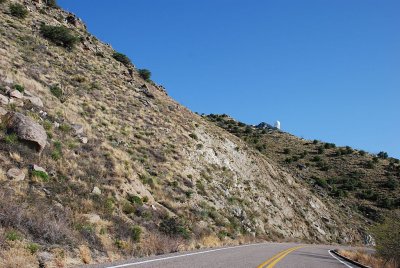
WE THOUGHT WE WOULD NEVER GET TO THE PEAK |

HOW DID THEY EVER BUILD THIS ROAD? |
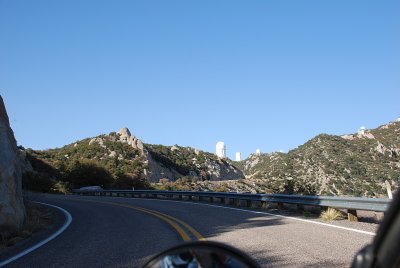
WE FINALLY NEARED THE SUMMIT AT 6875 FT ABOVE THE SONORAN DESERT FLOOR |

WE ARE ALMOST THERE AND OUR LITTLE CONVERTIBLE IS GASPING |
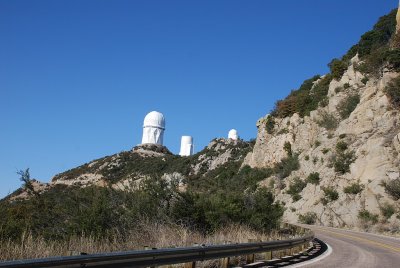
THE FINAL SET OF TURNS......... |
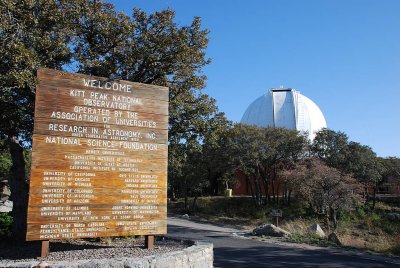
WE HAD ARRIVED AT THE WORLD FAMOUS KITT NATIONAL OBSERVATORY |
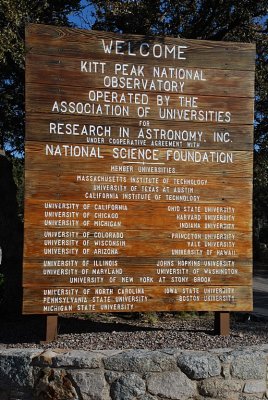
THE KITT PEAK NATIONAL OBSERVATORY IS SPONSORED BY SEVERAL GOVERNMENT AGENCIES AND UNIVERSITIES |

THIS IS A MAP OF THE GROUNDS AND VARIOUS INSTALLATIONS AT KITT PEAK |
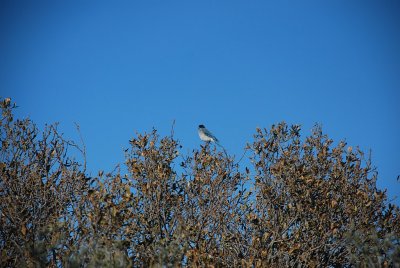
SARA ALWAYS ON THE LOOKOUT FOR NEW BIRDS SPOTS A WESTERN SCRUB JAY THAT FOLLOWED US UP THE MOUNTAIN |

A QUICK TRIP TO THE RESTROOM REVEALED BLACKOUTS ON THE WINDOWS, A HECK OF A FLUSH TO THE TOILET AND HEAT, GLORIOUS HEAT... |
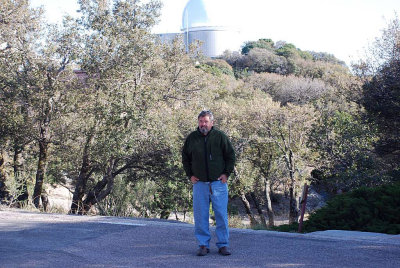
DON IN THE PARKING LOT WITH THE DOME OF THE 2.1 METER TELESCOPE IN THE BACKGROUND |
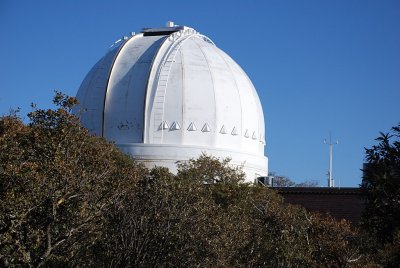
THE DOME OF THE "BIG BOY" , THE MAYALL 4 METER LOOMED ABOVE US |
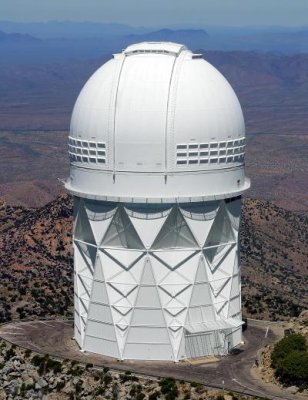
A SHOT OF THE MAYALL FROM THE HILL NEARBY |
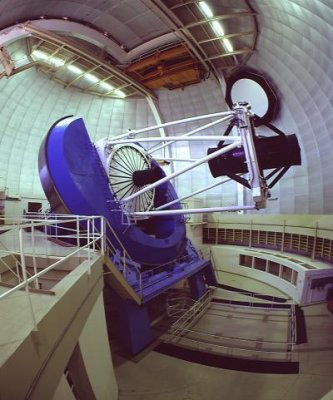
THIS IS THE ACTUAL MAYALL 4 METER TELESCOPE |
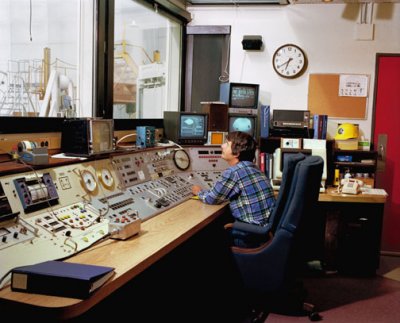
THIS IS THE NICE WARM AND COMFORTABLE CONTROL ROOM OF THE MAYALL TELESCOPE |
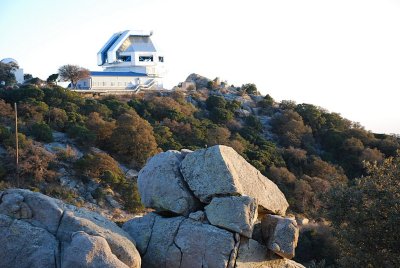
THIS IS THE WIYN 3.5 METER TELESCOPE |
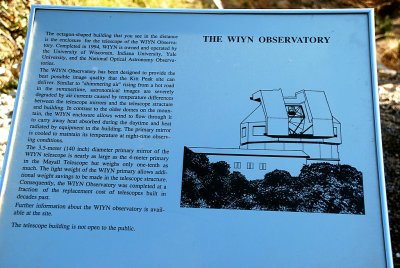
THIS PLAQUE DESCRIBES THE WIYN TELESCOPE |
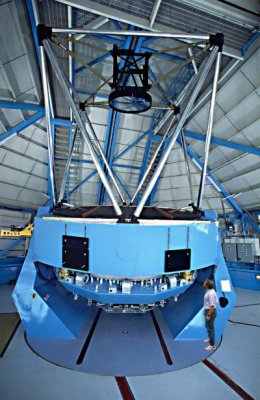
THE ACTUAL WIYN TELESCOPE WITH ITS "FLEXIBLE" PRIMARY MIRROR |
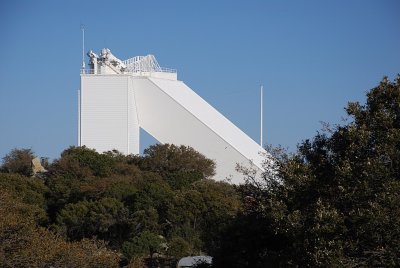
THE MCMATH-PIERCE SOLAR TELESCOPE |
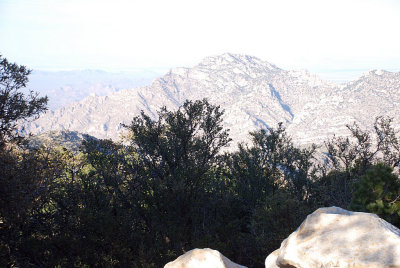
A VIEW FROM THE TOP OF KIT PEAK FACING NORTH TOWARD PHOENIX |
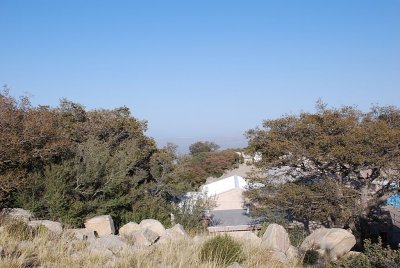
VIEW FROM KITT PEAK FACING EAST TOWARD TUCSON |
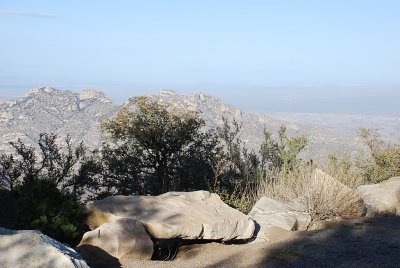
ANOTHER VIEW FROM KITT PEAK FACING THE EAST TOWARD TUCSON |
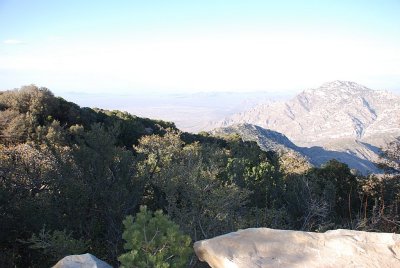
KITT PEAK IS NAMED AFTER THE SISTER (PHILIPPA KITT) OF PIMA COUNTY SURVEYOR GEORGE ROSKRUGE IN 1874 |
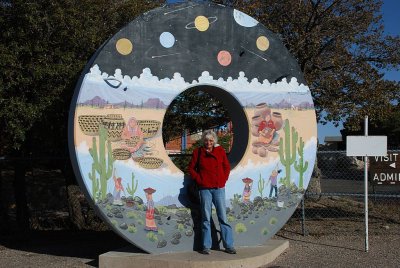
THIS IS SARA STANDING IN FRONT OF A CONCRETE MODEL OF THE 4 METER, 15 TON MAYHALL PRIMARY MIRROR |

DON IN FRONT OF THE SAME MODEL OF THE MAYALL MIRROR |

THIS IS A BEAUTIFUL MURAL ON THE FRONT OF THE KITT PEAK VISITOR CENTER |
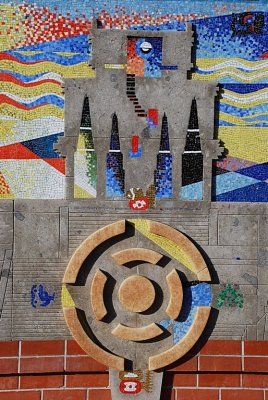
THE MURAL WAS DONE BY A NATIVE AMERICAN ARTIST AND FILLED WITH ASTRONOMICAL SYMBOLS |

A PICNIC AREA IS LOCATED OUTSIDE THE VISITOR CENTER |
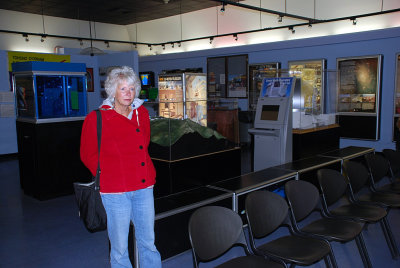
SARA CHECKED OUT THE MANY DISPLAYS INSIDE THE VISITOR'S CENTER |

EACH VISITOR TO KITT PEAK IS GREETED BY THESE INSPIRATIONAL WORDS BY A FAMOUS ASTRONOMER |

THIS DISPLAY INSIDE THE VISITOR'S CENTER SHOWS SUNRISE AND SUNSET ACROSS THE GLOBE MINUTE BY MINUTE |
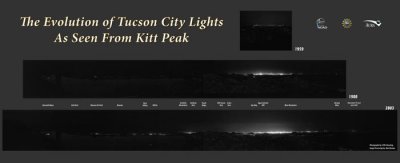
THIS DISPLAY SHOWS THE INCREASE IN LIGHT POLLUTION FROM 1959 T0 2003 |

THE GIFT SHOP AT THE VISITOR'S CENTER WAS FILLED WITH KITT PEAK MEMORABILIA AND ASTRONOMY EQUIPMENT |

THE NATIVE AMERICAN ART OF THE TOHONO TRIBE OF THE O'ODHAM WAS BEAUTIFUL AND EXPENSIVE |
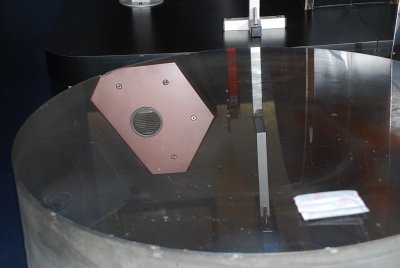
THIS IS THE PLUG CUT OUT OFTHE CENTER OF THE PRIMARY MIRROR OF THE 15 TON MAYALL TELESCOPE |

PLUG HAD SEVERAL BUBBLES IN IT BUT REMEMBER THE LIGHT DOESN'T PASS THRU IT BUT IS REFLECTED BACK BY THE MIRROR COATED SURFACE |
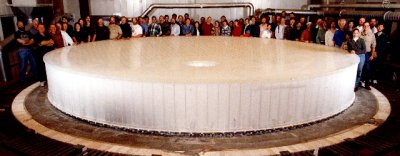
THIS IS ONE OF THE GIANT MIRROR "BLANKS" PRODUCED AT THE STEWARD MIRROR LAB UNDER THE STADIUM AT UA IN TUCSON |
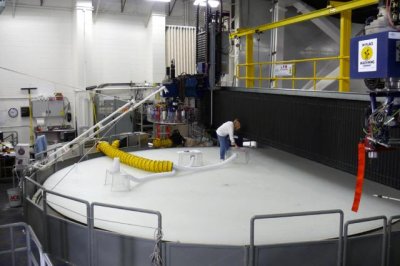
THIS PICTURE SHOWS THE MASSIVE OVEN THAT SPINS WHILE PRODUCING MIRRORS AT HIGH TEMPERATURE |

HERE IS A FINISHED "BLANK" MIRROR BEFORE IT IS GROUND, COATED AND POLISHED |

THIS SIGN MARKED THE TRAIL UP TO THE EVENING SUNSET AND THE SARA TELESCOPE |

A PICTURE OF THE WIYN TELESCOPE AT SUNSET |

THE VIEW FROM KITT PEAK AS THE SUNSET ARRIVES |
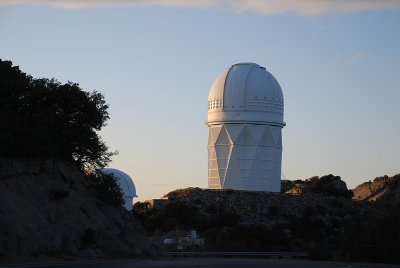
THE MAYALL TELESCOPE AT SUNSET |

THIS WAS OUR GROUP READY TO WATCH THE SUN GO DOWN UNDER THE SHADOW OF THE SARA TELESCOPE |
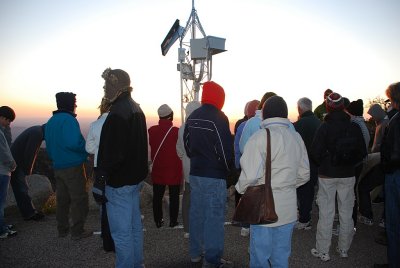
IT WAS VERY, VERY COLD AND WINDY UNDER THE WEATHER STATION |
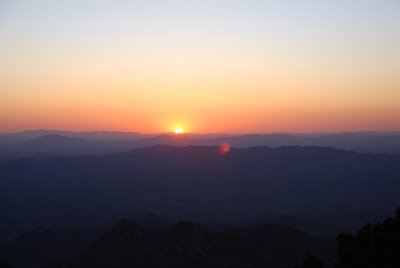
EARLY SUNSET LOOKING TO THE WEST |
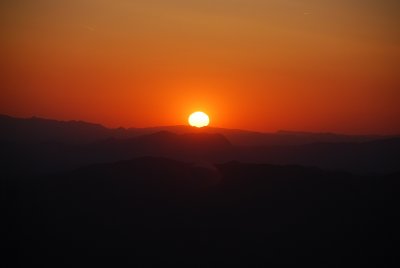
AS THE SUN DECLINED THE SKY BEGAN TO GLOW |
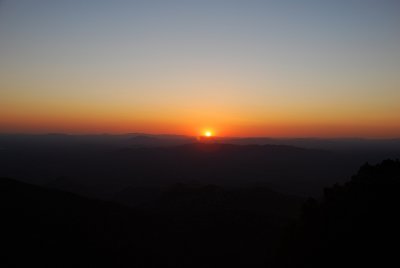
AT THIS STAGE THE SUN IS ACTUALLY BELOW THE HORIZON BUT DUE TO THE BENDING OF THE LIGHT YOU CAN STILL SEE IT |

THE SARA TELESCOPE WITH ITS DOME DOOR DOWN, COOLED AND WAITING FOR OUR VISIT |
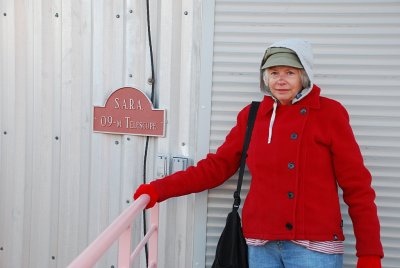
SARA ABSOLUTELY LOVED HAVING A TELESCOPE AT KITT PEAK NAMED AFTER HER |

A PAST VISITOR FROM THE UNIVERSITY OF WISCONSIN LEFT ONE OF THOSE FAMOUS FLAMINGOS AT THE SARA TELESCOPE |
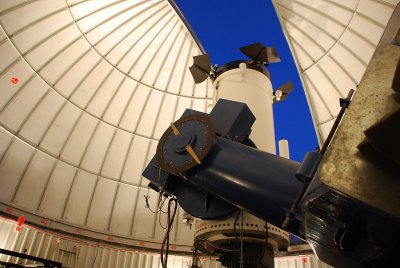
THIS PICTURE WAS TAKEN FROM JUST BELOW THE SARA TELESCOPE AS IT PEERED OUT THE SLIT IN THE DOME |

THE FLAPS AT THE END OF THE SARA TELESCOPE CLOSE TO KEEP DEBRIS (LIKE BIRD POOP) OUT OF THE TELESCOPE WHEN NOT IN USE |
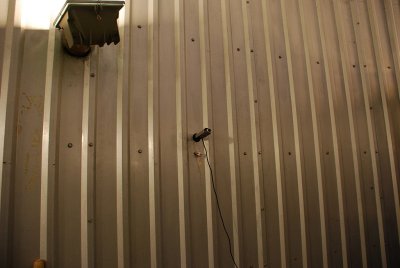
THE SARA TELESCOPE IS A REMOTE CONTROLLED FACILITY-NOTICE THE ROMOTE CAMERAS ON THE DOME WALLS |

THE HUGE ARM SUPPORTS THE TELESCOPE AND IS COUNTER BALANCED BY A HUGE WEIGHT |

NOTICE THE HUGE COUNTER BALANCE WEIGHT AT THE LOWER RIGHT |

THIS IS THE "WORKING END" OF THE SARA TELESCOPE WITH ALL ITS SENSORS, CAMERAS AND COMPUTER CONTROLLERS |

THE SIGN SAYS "OBJECTS IN THE MIRROR ARE LARGER THAN THEY APPEAR"-ASTRONOMY HUMOR!!!! |

DIFFERENT UNIVERSITIES JUST HAD TO LEAVE THEIR SCHOOL SYMBOLS ON THE INSIDE SURFACE OF THE SARA'S DOME FOR THE REMOTE CAMERAS |
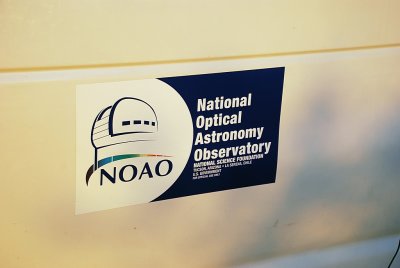
EVEN NOAO HAD TO LEAVE ITS MARK-THIS TIME ON THE SIDE OF A KITT PEAK VEHICLE |
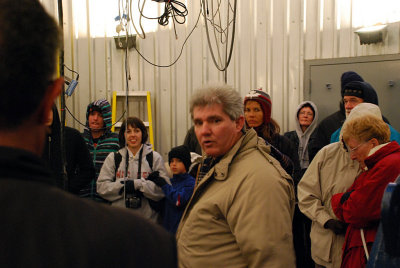
OUR GUIDE WAS GREAT AND ANSWERED ALL OUR QUESTIONS |
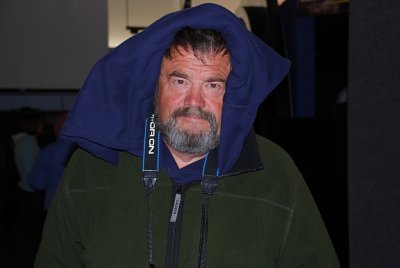
LEAVING THE SARA TELESCOPE WE WERE FREEZING-GUESS WHO FORGOT TO BRING A WARM HAT |
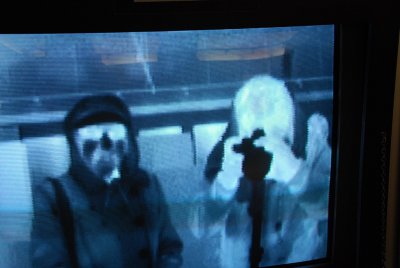
SARA AND DON IN FRONT OF THE INFRA RED CAMERA AND SCREEN BACK AT THE VISITOR CENTER-BLACK IS COLD AND WHITE IS WARM |
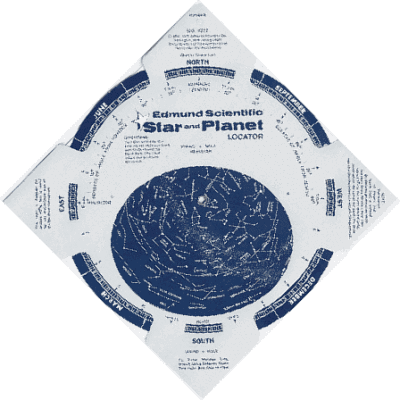
THIS IS A PLANET AND STAR LOCATOR ON SALE AT THE VISITOR CENTER GIFT SHOP |

A CLOSE UP OF ANOTHER LOCATOR-THEY REALLY WORK AFTER YOU LOCATE THE NORTH STAR |

THIS IS THE VISITOR CENTER TELESCOPE WE USED DURING OUR VISIT TO KITT PEAK |

THESE LITTLE PEN LIGHTS WITH THEIR RED LIGHT WERE USED TO FIND OUR WAY OUT TO THE VISITOR CENTER TELESCOPE |

THIS IS ALGIEBA, A BINARY STAR AT 126 LIGHT YEARS AWAY AS SEEN THROUGH THE TELESCOPE |
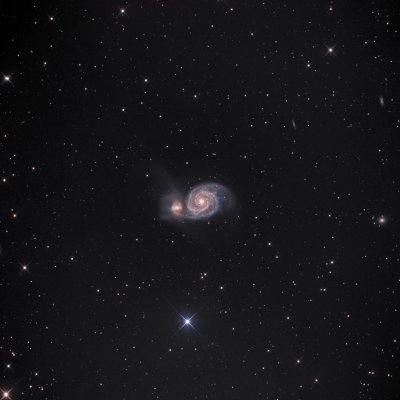
THIS IS M51 WHIRLPOOL GALAXY-CAN YOU SEE THE SPIRAL ARMS |
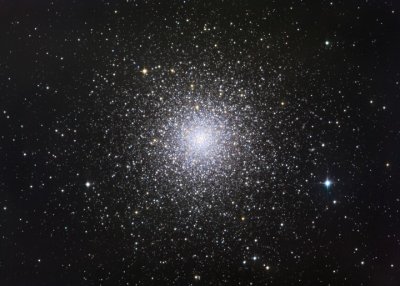
THIS THE M3 CLUSTER OF A HALF A MILLION STARS |
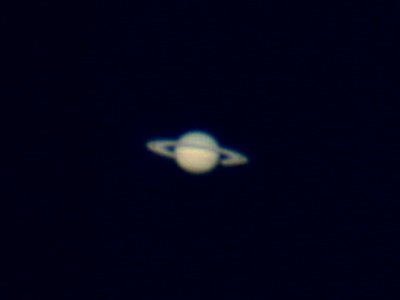
SATURN AS SEEN THROUGH THE VISITOR TELESCOPE |

NOW FOR A REAL LOOK AT SATURN FROM THE HUBBLE TELESCOPE OUT IN SPACE-WOW |

LOOK AT THE DETAIL IN THE RINGS-EMPRESSED???? |

WELL HOW ABOUT THIS VIEW FROM THE HUBBLE TELESCOPE!!!!!! |
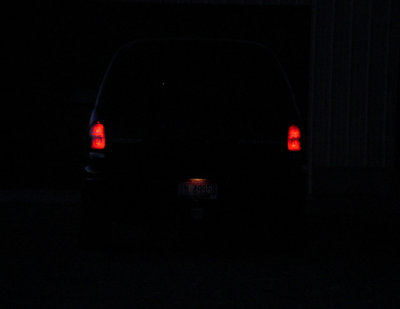
THIS WAS THE VIEW FROM THE FRONT WINDOW OF OUR CAR AS WE LEFT THE TOP OF KITT PEAK-DOES THIS GUY KNOW WHERE HE IS GOING???????? |











